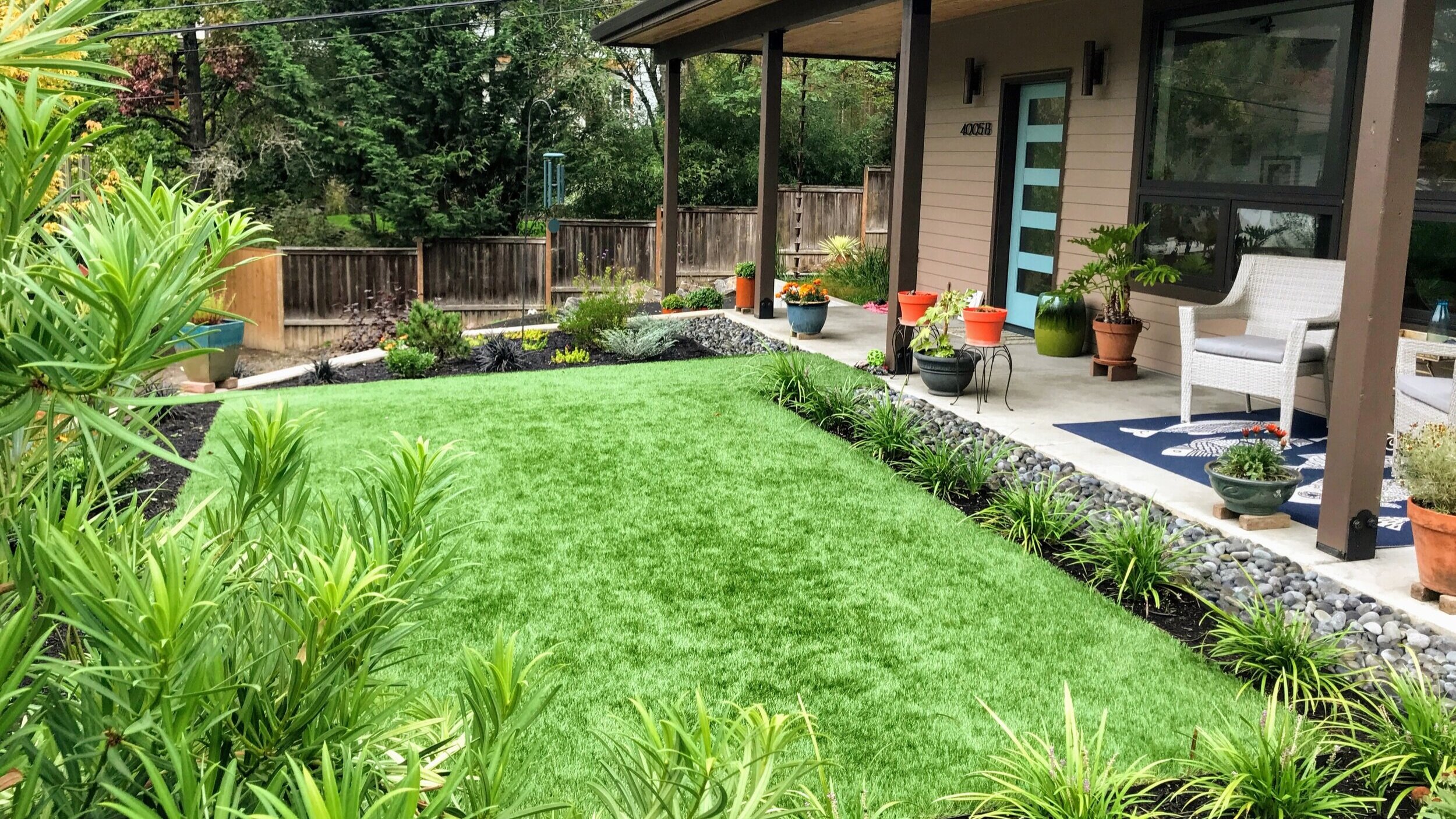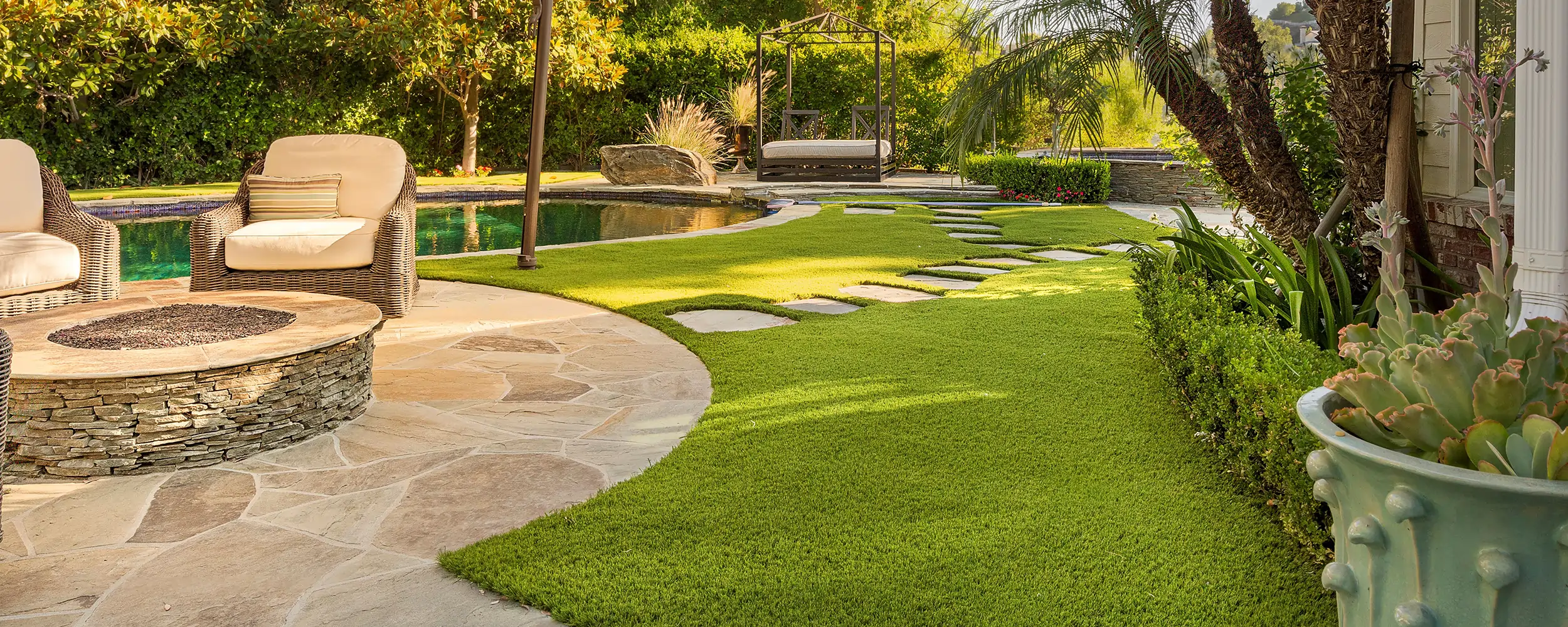Top Arizona Turf Providers Ensuring a Lifelike Lawn Alternative
Top Arizona Turf Providers Ensuring a Lifelike Lawn Alternative
Blog Article
Explore the Environmental Conveniences of Opting for Artificial Turf Solutions
The fostering of synthetic grass options provides an engaging chance to address pressing environmental challenges. By substantially reducing water usage and lessening the application of harmful chemicals, these alternatives not just advertise lasting landscaping however additionally shield neighborhood ecosystems. In addition, the lower carbon footprint related to lowered maintenance tasks adds to a much more sustainable method to land management. Nonetheless, the effects of these benefits prolong beyond simple preservation efforts, increasing questions concerning their lasting influence on habitat conservation and overall environmental balance. Checking out these measurements discloses an intricate interplay worth considering.
Water Conservation Advantages
One of one of the most substantial benefits of synthetic grass is its ability to preserve water. Standard turf lawns call for significant watering, particularly in locations vulnerable to dry spell or water constraints. In contrast, synthetic grass does not need watering, dramatically lowering the total demand for water sources. This attribute is specifically valuable in dry regions where water deficiency is a pressing issue.
By removing the requirement for normal watering, synthetic grass adds to lasting landscape practices and assists minimize the ecological effect of too much water consumption. Moreover, the preservation of water reaches the reduction of runoff, which can result in dirt erosion and river contamination.
In addition, the setup of synthetic grass enables districts and house owners to allot water resources extra efficiently, concentrating on important usages such as alcohol consumption water and agriculture. The shift towards artificial turf not just advertises responsible water use yet likewise lines up with broader environmental goals targeted at maintaining natural deposits.
As communities significantly focus on sustainability, the water conservation benefits of artificial grass offer an engaging case for its fostering in residential and commercial landscaping projects.
Reduced Chemical Use
The shift to man-made grass substantially lowers the reliance on chemical treatments typically utilized in all-natural turf maintenance. Typical grass management typically includes the application of herbicides, pesticides, and fertilizers to promote development and control insects. These chemicals can posture threats to human health, neighborhood wildlife, and the setting, adding to soil and water contamination.
In comparison, artificial turf removes the need for these unsafe substances. Once set up, it calls for very little upkeep, largely including routine cleansing and infrequent infill replenishment. This decrease in chemical usage not only benefits the immediate atmosphere however likewise adds to wider ecological stability. By reducing the launch of artificial compounds into the community, synthetic grass promotes much healthier soil and water supply.
Additionally, the absence of chemical drainage associated with man-made lawn installations assists shield neighborhood waterways from air pollution, sustaining aquatic life and preserving biodiversity. Phoenix turf companies. As areas progressively focus on lasting practices, choosing synthetic grass presents a viable solution that straightens with environmental conservation goals. Through this shift, homeowner can delight in lavish green areas without endangering environmental health, leading the way for a more sustainable future
Lower Carbon Impact
Additionally, the installation of fabricated turf can cause substantial water conservation. All-natural lawns need substantial amounts of water for irrigation, which not only contributes to the carbon footprint connected here with water extraction and treatment but likewise strains local water sources. In contrast, fabricated lawn requires marginal maintenance, needing no watering, therefore dramatically decreasing water usage and its connected energy prices.
Additionally, the long life of synthetic grass adds to its decreased carbon effect. With a life expectancy of as much as 15 years or more, the requirement for regular substitutes is lessened, resulting in less waste and lower energy consumption in manufacturing and getting rid of standard lawn alternatives. In general, synthetic grass presents a sustainable choice for ecologically aware landscaping.
Environment Conservation
Habitat conservation is an essential factor to consider in the discussion over landscaping selections, especially when comparing synthetic grass to all-natural lawn. Natural yard lawns frequently call for considerable maintenance, consisting of making use of pesticides, herbicides, and fertilizers, which can adversely impact neighborhood environments. These chemicals can leach right into the dirt and rivers, hurting indigenous plants and animals and disrupting local environments.
Synthetic grass removes the need for harmful chemicals, thus protecting neighboring wild animals and maintaining the integrity of bordering environments. The setup of man-made grass can lead to the conversion of former lawn areas into even more biodiverse landscapes, such as pollinator yards or indigenous plant locations, which can support local wild animals.
Inevitably, the transition to synthetic grass not just conserves water and decreases maintenance initiatives but likewise fosters a more harmonious relationship in between human tasks and the natural atmosphere, advertising habitat conservation while doing so.
Long-Term Sustainability
Long-term sustainability is a critical consider examining the advantages of artificial turf over conventional lawn yards. Among one of the most significant benefits of synthetic grass is its resilience; it can last up to 15-20 years with very little upkeep, whereas natural yard needs frequent reseeding and replacement. This durability lowers the demand for continuous resources, such as water, fertilizers, and chemicals, which are essential for maintaining a healthy and balanced yard yard.
In addition, fabricated grass adds to a decrease in carbon discharges connected with lawn treatment devices. Standard lawns frequently call for gas-powered lawn mowers, leaners, and blowers, every one of which add to air contamination. Arizona turf. On the other hand, fabricated grass gets rid of the need for such equipment, promoting a cleaner environment
Additionally, the manufacturing of synthetic grass significantly makes use of recycled materials, enhancing its sustainability account. As manufacturers take on green techniques, the ecological footprint of synthetic turf remains to reduce.

Verdict
The fostering of fabricated turf solutions presents significant ecological benefits, consisting of check my reference significant water preservation, reduced dependence on damaging chemicals, and a lower carbon footprint. Fabricated grass help in preserving natural environments by lessening land disruption and promoting long-lasting sustainability with the use of durable materials. Collectively, these variables underscore the potential of artificial turf to add favorably to environmental health and use a sensible alternative to typical landscaping practices in a significantly resource-conscious globe.
In contrast, fabricated grass does not require watering, significantly reducing the total demand for water sources. By minimizing the launch of artificial substances right into the ecological community, artificial lawn advertises much healthier dirt and water systems.
Furthermore, the setup of artificial turf can result in considerable water preservation. In contrast, synthetic lawn requires very little upkeep, needing no watering, thus significantly decreasing water usage and its connected power expenses.

Report this page